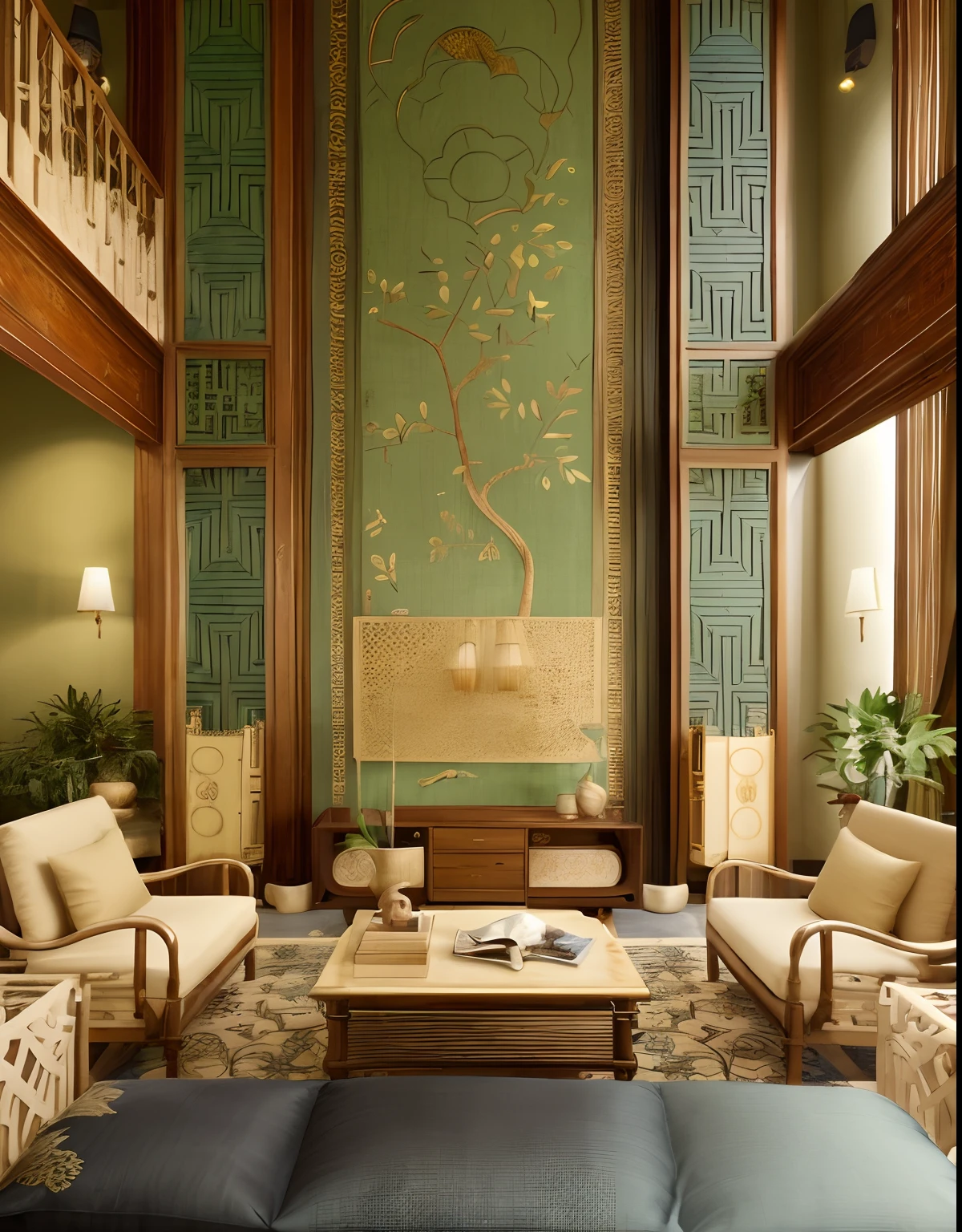Arafed room with a large painting on the wall and a couch

Generation Info
Prompts
1
.
Architecture and Space:
French architectural principles are combined with traditional elements of Southeast Asia
,
such as villa-style buildings with large wooden windows
,
ornate wrought iron balconies
,
and other distinctive French architectural features
.
Spaces are often expansive and open to optimize ventilation and natural light
.
2
.
Colors and Color Palette:
The color palette is typically a fusion of muted tones and vibrant hues
.
Colors like lush green
,
deep blue
,
rich brown
,
earthy tones
,
white
,
and gold come together to create a unique color tapestry
.
The contrast between subdued and vibrant colors strikes a balance between elegant beauty and functional aspects of the style
.
3
.
Furniture and Decor:
Furniture made of polished
,
gleaming wood with intricate carvings
,
such as sofas
,
dining tables
,
and beds
,
blends the beauty of French design with the uniqueness of Southeast Asia
.
Luxurious embroidered fabrics and silk are often used for curtains
,
cushions
,
and rugs
.
Decor elements like lanterns
,
wall art featuring Southeast Asian patterns
,
traditional pottery
,
and ceramics contribute to a diverse space in terms of visuals and materials
.
4
.
Unique Elements:
Traditional woven fans and decorative items made from bamboo establish a strong connection with Southeast Asian culture
.
Incense and herbal candles are often used to create a distinctive aroma and a relaxing atmosphere
.
5
.
Emotions and Space:
Indochine style creates a diverse and sophisticated space where the intersection of two cultural backgrounds generates dynamism and uniqueness
.
Spaces often evoke feelings of tranquility
,
elegance
,
and allure
,
while maintaining a sense of sophistication and refinement
.
Indochine style is not merely a type of interior decoration
;
it's also a way to honor the fusion of French and Southeast Asian cultures and histories
,
resulting in a distinctive and visually pleasing environment
.
Checkpoint & LoRA

Checkpoint
Realistic Vision V6.0 B1
0 comment
0
1
0
0/400







